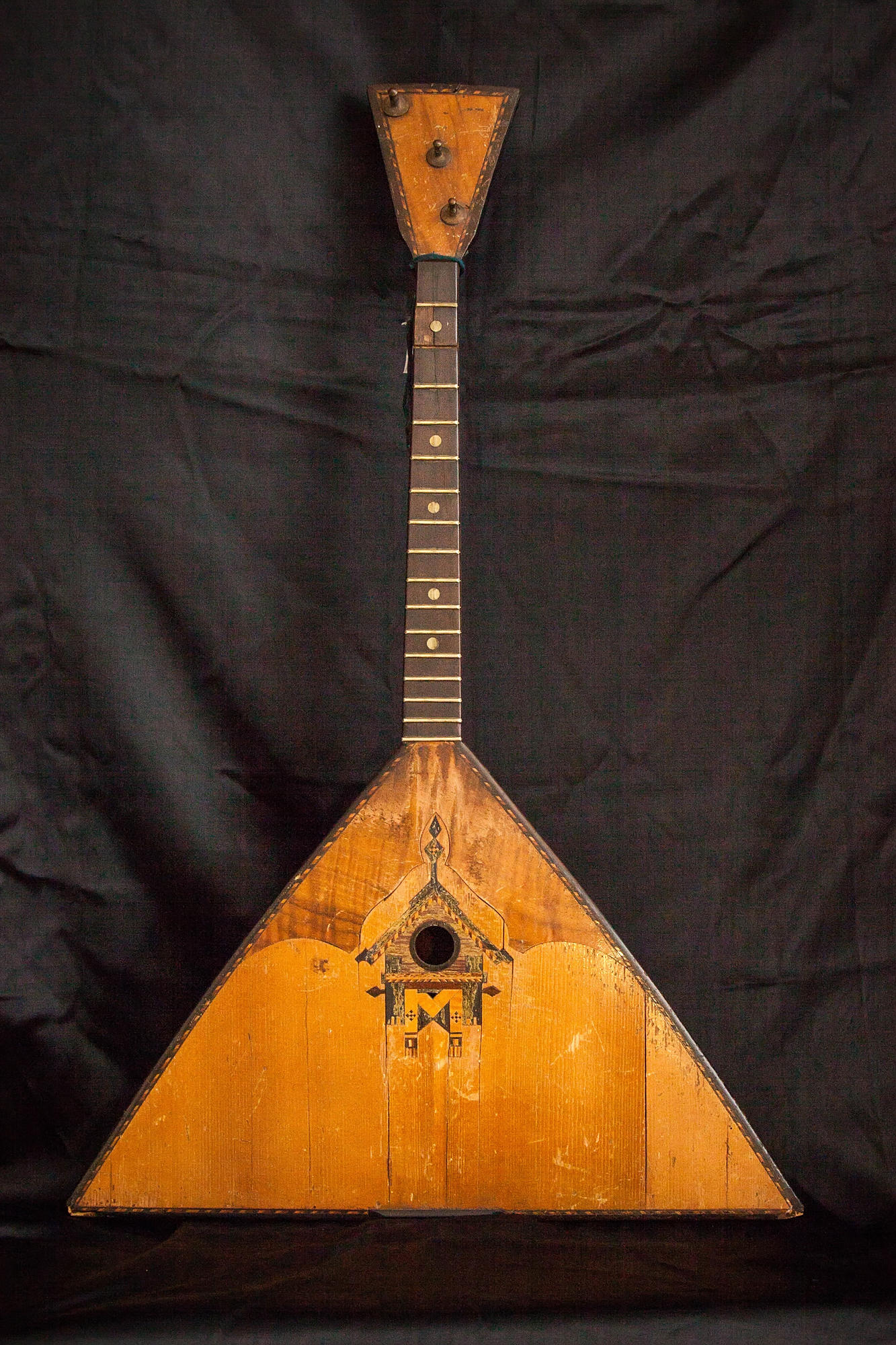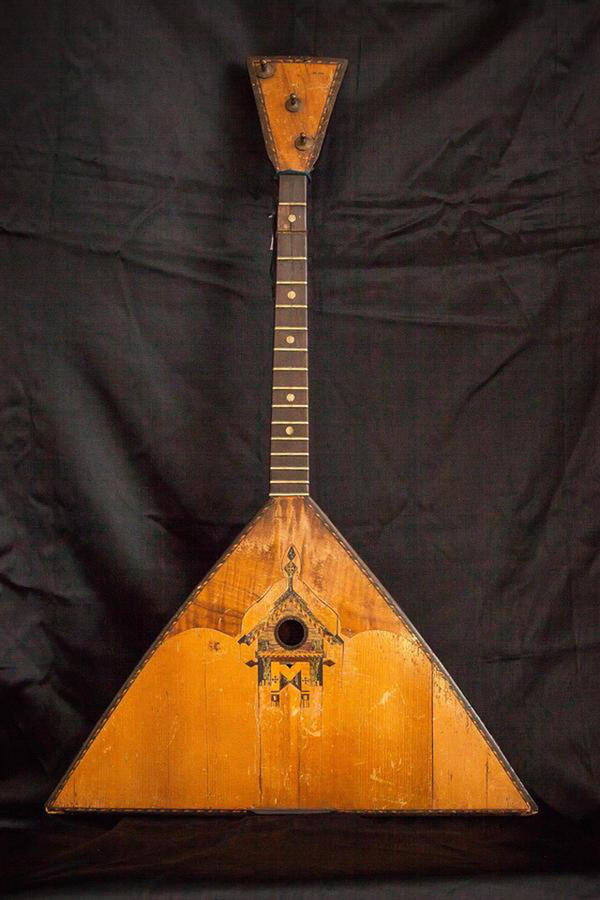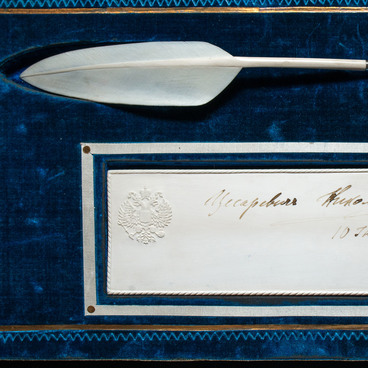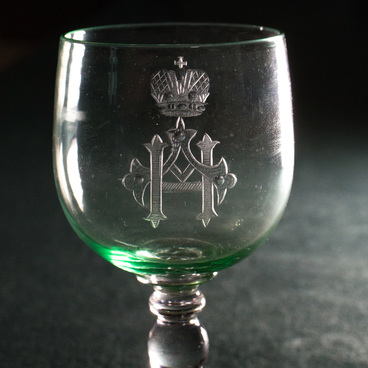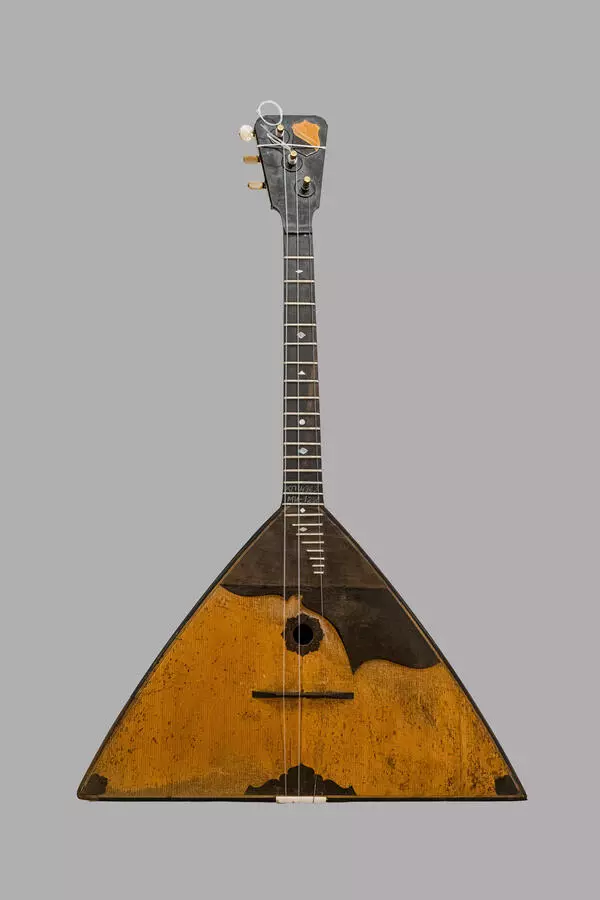The Empress Alexandra Fedorovna, a German princess by birth, liked the sound of this Russian folk instrument, a three-stringed balalaika. She even gave orders to buy her daughters, grand duchesses, small toy balalaikas in a music store. But the instruments were just a plaything for them.
Only Tsarevich Aleksei showed a serious interest in the instrument. From his early childhood, the prince learned to play the balalaika. His first instructor might have been Major General Alexei Resin. However, he could not devote much time to tutoring the young prince, so a new tutor, Court Counsellor Alexander Zarubin, was hired for the boy.
The Empress encouraged the interest of Tsarevich Aleksei in balalaika. In 1917, she included compulsory balalaika lessons (two lessons a week) in his schedule. But the lessons never began: after the February Revolution of 1917, Czar Nicholas II abdicated the throne, and soon the Romanov family was exiled to Tobolsk.
Although there was no one to teach him to play the balalika in exile in Siberia, Tsarevich Alexei did not give up his hobby. The inventory list of the things the Romanov family received from the Alexander Palace had two musical instruments, including a three-stringed balalaika.
When the imperial family came to Yekaterinburg, Tsarevich Alexei continued to practice playing the balalaika. In the Ipatiev House, the place where the Romanovs spent the last days of their lives, there was found a book entitled ‘How to Play the Balalaika’ with the young prince’s monogram — the crown and the letter A — on the cover.
The balalaika held in the collection of the Tobolsk Historical and Architectural Museum — Reserve was made by Semyon Nalimov, a famous crafter of musical instruments. From 1895 to 1917, he made more than 300 different folk string musical instruments, including balalikas, guslis (gusli — the oldest East Slavic multi-string plucked instrument), and domras (domra — a mandolin-like string instrument). His nickname was a “balaika Stradivari”.
The soundboard is decorated with an inlaid picture of a small house from different-colored wood pieces. The instrument is carefully polished and varnished. The balalaika was donated to the museum in 2018 by Valery Bruntsev, a well-known collector from St. Petersburg.
Only Tsarevich Aleksei showed a serious interest in the instrument. From his early childhood, the prince learned to play the balalaika. His first instructor might have been Major General Alexei Resin. However, he could not devote much time to tutoring the young prince, so a new tutor, Court Counsellor Alexander Zarubin, was hired for the boy.
The Empress encouraged the interest of Tsarevich Aleksei in balalaika. In 1917, she included compulsory balalaika lessons (two lessons a week) in his schedule. But the lessons never began: after the February Revolution of 1917, Czar Nicholas II abdicated the throne, and soon the Romanov family was exiled to Tobolsk.
Although there was no one to teach him to play the balalika in exile in Siberia, Tsarevich Alexei did not give up his hobby. The inventory list of the things the Romanov family received from the Alexander Palace had two musical instruments, including a three-stringed balalaika.
When the imperial family came to Yekaterinburg, Tsarevich Alexei continued to practice playing the balalaika. In the Ipatiev House, the place where the Romanovs spent the last days of their lives, there was found a book entitled ‘How to Play the Balalaika’ with the young prince’s monogram — the crown and the letter A — on the cover.
The balalaika held in the collection of the Tobolsk Historical and Architectural Museum — Reserve was made by Semyon Nalimov, a famous crafter of musical instruments. From 1895 to 1917, he made more than 300 different folk string musical instruments, including balalikas, guslis (gusli — the oldest East Slavic multi-string plucked instrument), and domras (domra — a mandolin-like string instrument). His nickname was a “balaika Stradivari”.
The soundboard is decorated with an inlaid picture of a small house from different-colored wood pieces. The instrument is carefully polished and varnished. The balalaika was donated to the museum in 2018 by Valery Bruntsev, a well-known collector from St. Petersburg.
